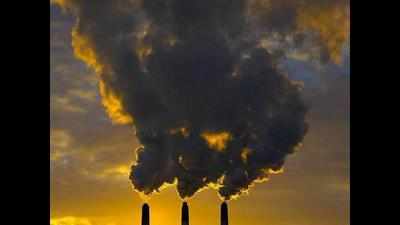- News
- City News
- delhi News
- Teri for pan-India clean air plan
Trending
This story is from October 7, 2016
Teri for pan-India clean air plan

(Representative image)
NEW DELHI: Keeping in view the deteriorating air quality in Delhi and other metros, The Energy and Resources Institute (Teri) has come out with a report, listing solutions to address this pressing issue. It suggests, among others, starting a nationwide clean air mission (CAM-INDIA), which should have the mandate to implement government policies for air pollution mitigation across several ministries.
“We need to ensure that we have an index to measure air quality. This is one of the reasons there was some action on air quality last winter. Once you have an index, you can expect to bring down the readings over time. Delhi needs to address a number of issues, all contributing to air pollution collectively. Public pressure on a large scale is needed,” said Dr Ajay Mathur, director general of Teri. He also hopes the report acts as a tool to address the issue on a larger scale.
Titled “Ten scalable solutions for Indian cities”, the report is a joint effort by Teri, United Nations Environment Programme (UNEP) and University of California at San Diego. Its suggestions focus on a variety of sectors, including transport, agriculture and power, which directly and indirectly impact pollution levels.
“For each rupee you spend, the benefits are 30 times more. This is the right time to solve the air pollution problem in India with Swachh Bharat campaign in place and there are a number of solutions out there, which can be put into use. Since air pollution travels from one place to another, a nationwide, multi-sectoral effort is necessary, spearheaded by a coordinating body, which can integrate all key stakeholders for a sustainable solution to the problem,” said Prof V Ramanathan, Scripps Institution of Oceanography, University of California.
“We need to ensure that we have an index to measure air quality. This is one of the reasons there was some action on air quality last winter. Once you have an index, you can expect to bring down the readings over time. Delhi needs to address a number of issues, all contributing to air pollution collectively. Public pressure on a large scale is needed,” said Dr Ajay Mathur, director general of Teri. He also hopes the report acts as a tool to address the issue on a larger scale.
Titled “Ten scalable solutions for Indian cities”, the report is a joint effort by Teri, United Nations Environment Programme (UNEP) and University of California at San Diego. Its suggestions focus on a variety of sectors, including transport, agriculture and power, which directly and indirectly impact pollution levels.
“For each rupee you spend, the benefits are 30 times more. This is the right time to solve the air pollution problem in India with Swachh Bharat campaign in place and there are a number of solutions out there, which can be put into use. Since air pollution travels from one place to another, a nationwide, multi-sectoral effort is necessary, spearheaded by a coordinating body, which can integrate all key stakeholders for a sustainable solution to the problem,” said Prof V Ramanathan, Scripps Institution of Oceanography, University of California.
According to the experts, not only the transport, but other sectors also needed to be factored in while framing policies. “While cutting transport emissions is important, you cannot ignore other sectors. Pollution is caused by surrounding states, dust and waste from landfills as well as construction sites. A large effort is required to address all these issues,” added Ramanathan.
End of Article
FOLLOW US ON SOCIAL MEDIA










